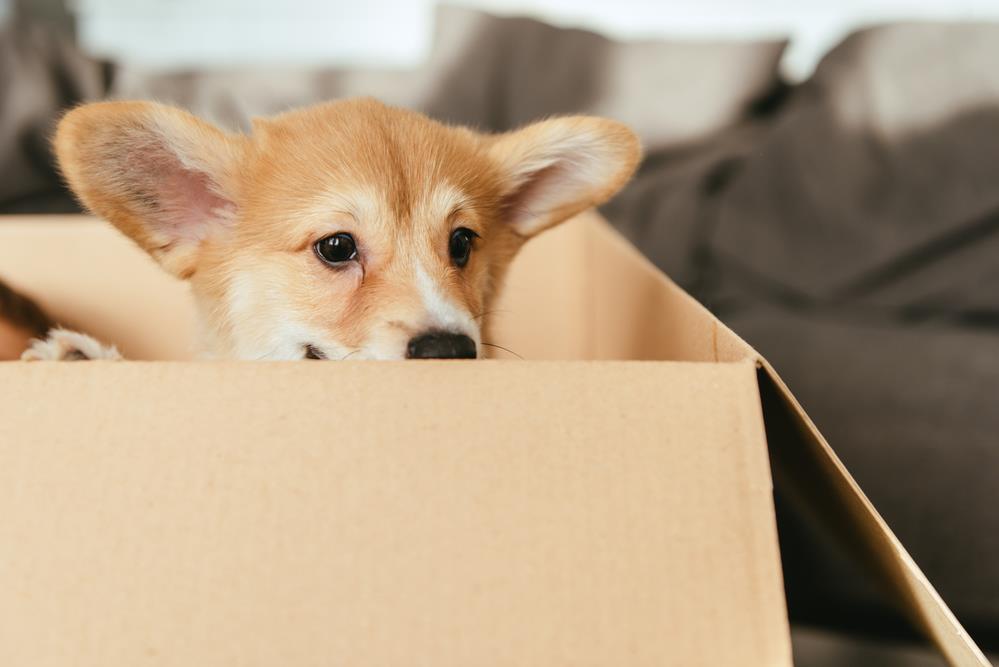Understanding Pets’ Stress During Relocation
Moving homes can be a stressful event, not just for humans, but for our beloved pets too. The reason lies in their natural instinct and attachment to their territory. Animals develop a strong bond with their environment, marking it as their own. Hence, a sudden change like relocation can cause significant stress and anxiety in them.
Adding to the territorial upheaval, the change in routine and environment can also disturb your pets. Animals thrive on routine, and any alteration to this can cause them to feel insecure and anxious.

By understanding the reasons behind your pets’ stress during relocation, you can better prepare and support them during this challenging time, making the transition smoother and less stressful for all involved.
Identifying Behavioural Changes in Pets
The key to recognising stress in pets, such as dogs, cats, birds, and others, lies in understanding their normal behaviour.
Significant changes in eating, sleeping, and playing habits can serve as an early indication of stress. Pets may eat less, sleep more, or show a reduced interest in play. A sudden shift in these habits should prompt a visit to the vet.
Unusual behaviours such as hiding or aggression might also manifest. Cats, for example, may hide more frequently while dogs might become overly protective or hostile.
Identifying and Addressing Stress in Pets
It’s essential to address behavioural changes promptly to prevent long-term health issues. Consult with a professional, such as a vet or a pet behaviourist if you observe any unusual behaviour.

Preparing Your Pet for the Move
When planning a move, it’s essential to prepare your pet for the upcoming changes. This preparation involves acclimatising them to carriers, crates, or car travel.
Next, gradually introduce your pet to packing materials and boxes. This allows them to become familiar with these items and reduces stress on moving day.
Maintaining Routine During the Move
Maintaining a normal routine throughout the moving process is also critical. Despite the chaos of moving, ensuring your pet’s feeding, exercise, and sleep schedules remain consistent can alleviate their anxiety.
To summarise, careful preparation can significantly reduce the stress your pet experiences during a move. By getting them used to travel conditions, introducing moving materials gradually, and maintaining their routine, you can help your pet transition smoothly.
Consider adding a chart here that outlines the timeline for preparing your pet for the move.
Visiting the Vet Before The Move
When preparing for a move, one crucial step that is often overlooked is taking your pet for a pre-move check-up. This visit to the vet is not only critical for assessing your pet’s general health but also to ensure they are ready for the journey.

During this visit, make sure all your pet’s vaccinations are up to date. Moving can expose your pet to different environments and potential diseases. Updated vaccinations will help protect your pet during this transition.
Lastly, for pets with severe travel anxiety, discussing the use of sedatives with your vet is advisable. While not all pets require sedatives, for some, it can make the moving process significantly less stressful. Consult with your vet to understand the best options for your pet.
Making Moving Day Less Stressful for Your Pet
When orchestrating a house move, it’s crucial to consider the impact on your pets. Unexpected changes can cause anxiety in animals. However, with careful planning, you can make the transition smoother for your furry companions.
Keeping Pets Away from the Chaos
Distancing pets from the pandemonium of moving day can help avert undue stress. Consider arranging a quiet, comfortable space in your home or enlisting a professional pet sitter.
Packing Their Items Last and Unpacking Them First
By packing your pet’s items last, you ensure that their familiar environment remains intact for as long as possible. Once in the new home, promptly unpack their belongings to create a sense of familiarity.
Importance of Familiar Scents and Toys during Transport
During transport, having an item with your pet’s scent or a favourite toy can provide a sense of security.
Settling into Your New Home with Your Pet
As you embark on the journey to a new home, it’s crucial to consider your pet’s transition. Many animals experience anxiety during moves, but with careful planning, you can help them adjust smoothly.
Step 1: Setting Up a Safe, Familiar Space for Your Pet
Start by establishing a safe haven for your pet in the new home. This should ideally be a quiet room filled with items that smell familiar, such as their bed, toys, and even your old t-shirt. This will create an environment that feels secure and homely.
Step 2: Gradually Introducing Them to the Rest of the House
Next, slowly introduce them to the rest of the house. Start with one room at a time, allowing them to sniff out and explore each new area under your supervision. This ensures a gradual and controlled exposure to their new surroundings.
Step 3: Monitoring and Addressing Initial Anxiety or Hiding Behaviours
Finally, monitor your pet’s behaviour closely during the initial days. Some pets may display signs of anxiety or tend to hide. If you notice such behaviours, consult a vet or a pet behavioural expert.
By following these steps, you can ensure a smooth transition for your furry friend into their new home.
I recommend adding a chart here to visually showcase the steps and progression for helping your pet adjust. This would provide a quick and easy reference guide for readers.
Establishing a New Routine for Your Pet
One of the key strategies in helping your pet adjust to a new environment is establishing a consistent routine. Predictability of a routine can significantly reduce stress for pets.
Start by setting a gradual feeding, walking, or play schedule. For example, you might initially keep feeding times the same as they were in your old home, then slowly adjust to a new schedule over a period of several weeks. This gradual adjustment can help your pet feel more secure during the transition.
Regular attention and reassurance are also crucial. Spend time each day playing with your pet, grooming them, or simply sitting with them. This can help to reassure them that despite the changes, they are still loved and cared for.
Consistency is key when establishing a new routine. Be patient, and remember that it may take some time for your pet to adjust. But with consistency and love, they will soon feel at home in their new environment.
When to Seek Professional Help for Your Pet’s Stress or Anxiety
Just as with humans, prolonged stress or anxiety in pets can take a toll on their health and well-being. If you notice changes in your pet’s behaviour such as excessive barking or meowing, loss of appetite, or unusual aggression, it might indicate that they’re struggling to cope with the stress of moving.

When such signs manifest, it’s time to consult with a vet or a pet behaviourist. These professionals can assess your pet’s condition and recommend suitable therapies, medications, or training methods that might help.
Therapies, Medications, or Training to Help Your Pet Cope with Moving
Helping your pet adapt to a new environment can involve various strategies, from behavioral training and therapy to prescribed medications. For example, some pets might benefit from positive reinforcement training, while others might require anti-anxiety medication. Always consult with a professional to determine the most appropriate approach for your pet.


